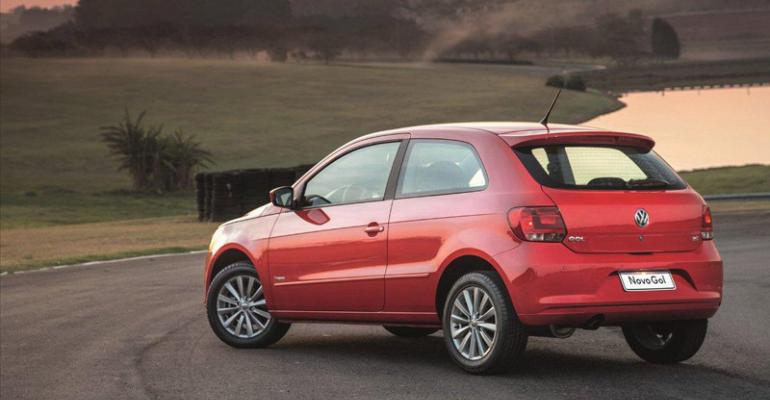SAO PAULO – Brazil’s growing economy is giving consumers more purchasing power than ever before.
This, plus effective social-welfare policies and an end to past cycles of hyper-inflation, has grown Brazil’s middle class, which now represents about 54% of the country’s 196 million population, according to the presidential office for strategic affairs.
Given that car ownership here indicates high social status, it is a priority to buy a vehicle even for Brazilians with modest annual incomes as low as BR30,000 ($15,000), the government report says.
As a result, auto makers sell a wide variety of makes and models ranging from BR30,000 to BR40,000 ($15,000-$20,000) price. Anfavea, the national association of auto makers, says about 150 different vehicle models are offered in Brazil from both domestic manufacturers and importers.
"Today, many people of the lower economic classes are buying cars, especially in south Brazil, the southeast and in some parts of the northeast,” says industry consultant Andre Beer, a former vice president of General Motors Brazil and former president of Anfavea.
About 50% of vehicle sales are low-cost, small cars, he says, predicting it will take another five years for demand for cross/utility vehicles, SUVs and hybrids to reach to significant levels.
Ricardo Strunz, chief finance officer of the Brazilian auto importers association, agrees the market is highly concentrated on small and medium vehicles, a trend he expects to continue in the near future. “Sales for crossover vehicles and SUVs are also expanding, but they are still costly and many Brazilians are priced out of this market.”
A Dodge Durango SUV, for example, costs BR62,000 ($31,000) in the U.S. but can sell for as much as BR200,500 ($100,000) in Brazil. Beer predicts that as SUV demand grows, prices will fall, especially if sales increase enough to persuade foreign auto makers to shift more production to Brazil.
"Everything will depend on the success of sales,” he says. “Only then manufacturers will decide to expand their production line to these specific types of cars."
That would be good news for premium auto makers, says Gleide Souza of BMW. "Brazil today is part of a select group of countries with a high growth potential for the coming years. BMW Group Brazil has grown here, and in 2011 (our) turnover was 52% higher than the previous year.”
BMW and others would be wise to offer alternatively powered cars in the future, with the government clearly indicating it favors green vehicles, notably via its Inovar-Auto program that encourages the local manufacture of electric and hybrid vehicles.
A bill proposed by Brazilian Parliament Deputy Fernando Coelho Filho, representing the Brazilian Socialist Party, is seeking to help create demand for alternative-powered vehicles by providing exemptions from the government’s onerous industrial-products tax (IPI) for the production and marketing of such vehicles over a 10-year period.
What the auto industry really wants is the development of a comprehensive government policy regarding vehicle fuel efficiency. If the government backs green cars with subsidies and tax breaks, consumers could shift significantly toward hybrids and electric cars, Beer predicts.
An official from Fenabrave, the national dealer association, tells WardsAuto 316,705 cars and light-commercial vehicles were sold in April, up a whopping 29.3% from year-ago and marking an 18.03% gain on March’s 268,324 units.
According to Anfavea data, the most popular vehicles in Brazil are the Volkswagen Gol, Fiat Palio and Fiat Uno.
Fiat, VW and GM remain the major auto makers in the country. However, all three are slowly losing share to newcomers, with competitors such as China’s Chery and JAC poised to enter the market in a big way, an Anfavea official says.





